by Armani Sanchez-Yu.
Eternal Aspect Unlock List:
Characters that arrive with an Eternal Aspect:
Brooke: Orion’s Pursuit – Hit Chance increased by 15%.
Samara: Ellis’ Light – Healing Power increased by 50%.
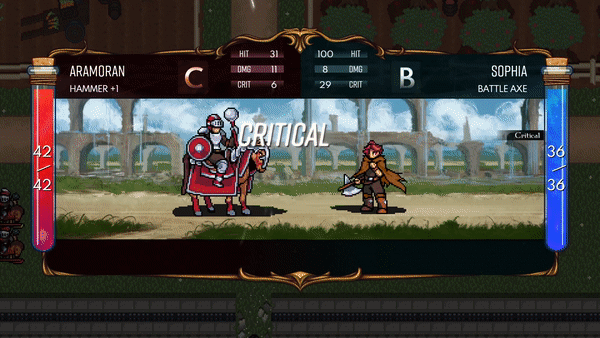
Sara: Cassara’s Blaze – 10% chance of dealing 1.5x damage.
Corvan: Ziegrach’s Luminance – Half of Mastery added to Accuracy.
Helena: Huss’ Hush – Nearby enemies deal 15% less magic damage.
Vesta: Faine’s Judgement – Bonded units within 2 tiles increase damage by 5%.
Aurima: Theron’s Passion – Critting increases crit chance by 1% for the rest of the level.
Maeve: Pelagiel’s Flash – If doubling, second attack deals plus 25% increased damage.
Thae: Vigmar’s Charge – Kills grant plus 2% power until the end of the chapter.
Monroe: Vosh’s Sanguination – Advanced Stats increased by 10% of max HP.
Ford: Shamac’s Tide – Dodging heals for 5 HP.
Liberty: Yl’andra’s Font – Power + 20%.
Available from Start:
Chamden’s Flux – Damage is randomly increased or decreased by up to 30%.
Ch. 10 unlocks:
Kaithir’s Promise – Counterattack damage increased by 25%.
Yl’mar’s Faith – Grants 40% resistance to Arcane magic.
Kyne’s Passage – Each turn grants a 1% buff to advances stats.
Hecleon’s Pride – Enemies are much more likely to target the holder.
Zeltar’s Flight – Swaps Strength and Speed.
Altum’s Descent – Dodge increased by 30% of strength.
Varden’s Ardor – Power increased by 15% of each weapon stat.
Linhera’s Whisper – Swaps Power and True Speed.
Ch. 15 unlocks:
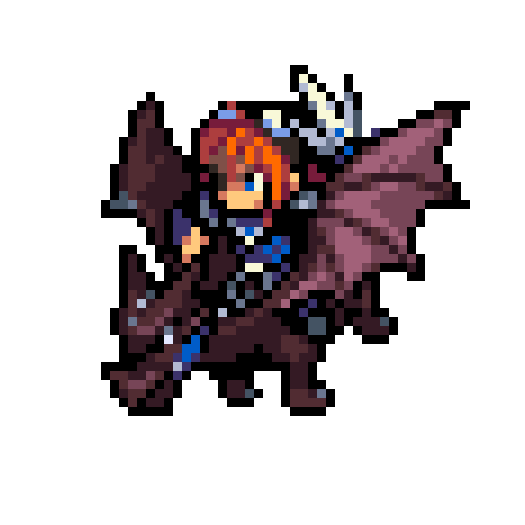
Jahno’s Stupor – Dodge decreased by 60%. Defense and Fortitude up by 10.
Malice’s Suffering – Crit increased by 30%, defense and fortitude reduced by half.
Ayn’s Premonition – True Speed doubled when below 30% HP.
Samaran’s Shade – Significantly lowers the rate at which enemies target the holder.
Njallum’s Heritage – Mastery increased by 20%.
Manos’s Fury – Hit Rate is always 50%, Power increases by 50%.
Aethe’s Chill – Grants a 40% resistance to fire magic.
Prisbel’s Rumble – Grants a 40% resistance to storm magic.
Koeli’s Spirit – Swaps Defense and Fortitude.
Almadessa”s Glade – Fortitude Plus 10 with no adjacent allies.
Sarathel’s Sight – Attacks marks enemies, increasing damage taken for 1 turn.
Soleric’s Rally – Attacking and defeating an enemy will restore 10% HP to nearby party members.
Izn’s Hope – Grants 40% resistance to Holy Magic.
Innileth’s Scale – Swaps Defense and Strength.
Quintare’s Quill – Swaps Mastery and Luck.
Darmena’s Kiss – Swaps Crit and Power.
Kitara’s Chord – Swaps Accuracy and Dodge.
Ancara’s Glow – Luck depleted to increase power, dodge, and true speed.
Yl’undrea’s Drift: Magic depleted to increase defense and fortitude.
Dark Deity is a very ambitious SRPG made by Sword and Axe LLC with many distinguishing features to it. Among its cast of 30 playable characters and immense class system, Dark Deity offers one more very important feature that really allows players to customize their units/characters the way they want to. These customization options come in the form of Eternal Aspects, or items that your characters equip that can drastically change the way the unit is played. The game provides tons of these aspects for you to put on your units, so it’s only natural that some are better than others.
The goal of this guide is to cover each aspect, give an overview of how good the aspect is, and give some character/class combinations that can really get the most out of these aspects. Do keep in mind that as of this writing, some aspects in the game do not work as intended. As such, this guide will be written, and these aspects will be analyzed and ranked, as if they all functioned as they were meant to so that when things are all patched out, this guide will still be usable. All Aspects will also be analyzed as if you were doing a normal, vanilla run with no special rules or requirements.
Also, there will be massive character unlock spoilers, class options spoilers, and boss spoilers ahead. Read at your own discretion.

The very first aspect you obtain in Dark Deity is unlocked in Chapter 1, at the very beginning of the game. Of course, you cannot really use it until you unlock the base mechanic to access your convoy which unlocks in Chapter 3. Starting in Chapter 3 onwards, you can put the Aspect “Chamden’s Flux” on any of your units, which has a random chance of either increasing or decreasing damage by up to 30%. This aspect should never be used in a real run unless you just want to have fun. While it is indeed good to increase damage dealt by up to 30%, it also comes with literally the worst drawback of any aspect as well.
Lowering damage by 30% is a huge detriment to a unit’s damage output, and Flux is even worse when you compare it to other Aspects which usually do not have drawbacks. If you could somehow predict when the 30% damage increase bonus would occur, this might have a little more use, but as it stands now, the randomness of the Aspect coupled with the clear advantages of the other ones makes this the worst Aspect in the game. If this were a tier list, Chamden’s Flux would be in a tier of its own – at the very bottom of the list. Flux is an F-Tier Aspect and should honestly be avoided as all it takes is a bit of unluckiness and that confirmed kill can be taken from you.
During Chapter 5, Brooke, Sara, and Samara will all appear carrying Aspects of their own. Only Brooke will officially join this chapter so we are going to cover her Aspect first. The Aspect Brooke comes with is “Orion’s Pursuit,” which increases your hit rate by a flat 15%. This is a solid B-Tier Aspect. It is universally appreciated as hitting more often is usually a good thing. There are a few scenarios where this is bad (such as when Alden keeps hitting and killing enemy units on enemy phase which allows for more enemy replacements to attack Alden, thus putting him close to death’s door), but for the most part, this is a pretty solid Aspect.
Typically, hitting more often can and will be a good thing. It especially benefits some less accurate units like Vesta, Rogues in the Raider Class, any units with a built red weapon, or any characters/units struggling with accuracy in general. The only reason this is a B-Tier Aspect is, again, because there are other Aspects that have better benefits than this one.
After beating Chapter 8, Sara and Samara will both join back with their Eternal Aspects in hand. It is possible to get both of their aspects early, starting when they appear in Chapter 5 by trading them to one of your units, such as Samara’s Aspect of “Ellis’ Light,” which increases all healing done by a unit by 50%. This benefits every cleric in the game. In nearly every run of Dark Deity you play, you’ll need at least one main dedicated healer, and this healer can benefit greatly with the added bonus of making heals 50% stronger.
Particularly, I think any cleric in the Guardian Class benefits the most from this Aspect as their healing spreads to the rest of the team. Of course, with or without this class clerics, in general, will benefit greatly from this since their primary purpose is healing. And with no negatives to it either, this aspect falls safely into A-Tier. You cannot go wrong with this one.
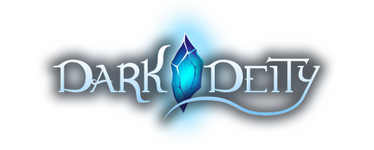
The other Aspect obtained after Chapter 8 that Sara possesses, “Cassara’s Blaze”, which has a 10% chance to deal 1.5x damage, belongs in C-Tier. This Aspect is by no means unusable and is in fact rather good. While this is rather fun when it procs, it is completely unreliable and random as well. Units that benefit the most from this are units with lots of Proccing skills already such as Elias, with his personal skill that gives him a separate crit chance, any adept who went Gale into Windrunner, or Conjurers into Pyromancers for Mages.
You can, of course, put it on anyone and have it work fine. It’s just that adding more proc chances to a unit with enough proc skills is better. Typically though, this aspect is outshined by more consistent Aspects that can be planned around like the S or A-Tier Aspects. If this one had a downside to it like Chamden’s Flux, it would most certainly be D or even F-Tier, but due to it only giving positive effects, it earns its place as a C-Tier Aspect.
One last character joins at the end of Chapter 8 who also has an Eternal Aspect. Corvan’s Aspect, “Ziegrach’s Luminance,” which adds half of your Mastery into accuracy (AKA Hit Rate), is a solid B-Tier. Its effects are consistent and you can plan around it. And even though this really only benefits units with high mastery, hitting more is still valuable especially against some mid to late game enemies such as thieves, tricksters, and assassins which are, in general, much harder to hit and deal with.
This Aspect will NOT drain your mastery by half either, unlike some other Aspects. This means that there are no drawbacks with this Aspect. It’s not the most broken Aspect, but characters like Irving, Aurima, or any character with good to high mastery and low to decent Dex will benefit the most from it. Orion’s Pursuit will typically outshine this Aspect as the flat improvement matters more in early to mid game as stats are not that high yet. You will start to really feel this one pulling its weight by mid to late game, however.
The only character unlocked in Chapter 9, Helena, comes with the Eternal Aspect “Huss’ Hush,” which causes nearby enemies to deal 15% less magic damage. Due to this one being worded oddly, this falls into C or B-Tier. If Huss’ Hush affects two tiles around the user, this is a B-Tier Aspect. This is due to the chance that it can affect allies being hit by magic as well if the aspect works as intended. Let’s lay out an example of how this can occur. Let’s say Unit A (Irving) has Huss’ Hush equipped. Unit B (Garrick, let’s say) is right next to Irving on the map
If a mage goes to the space above Garrick (which would be one space up and to the right of Irving and still falls into the two-tile range) and then attacks Garrick, Garrick would take 15% less damage from the mage due to Huss’ Hush even though he does not have it equipped because he and the enemy mage are in range of Irving who does. If the percent of magic damage taken was reduced more, this would probably be an A-Tier artifact. As it stands, 15% is too small a reduction to place it in A-Tier. 15% of 20 damage would be 3 less damage taken. 15% of 40 is 6, and 15% of 60 is 9. The enemy would have to deal over 70-ish damage for you to take 10 less damage.
This is all taking into account if it’s both two tiles and can affect allies. If this is wrong, and it only affects one tile range and allies, this is low C-Tier, and if it only affects one tile and only the unit using it, this is an easy D-Tier Aspect. (As of this writing, this Aspect does not work as intended, so it was hard gathering data on what actually happens with it.) Some good characters to use this on, if it works like I said above, is any frontline character. I think Helena herself is pretty good for this. Her personal skill gives her extra fortitude, she’s a warrior so she will naturally be on the front lines, and she should already be fine against mages, so an extra 15% less damage taken from magic is really good on her.
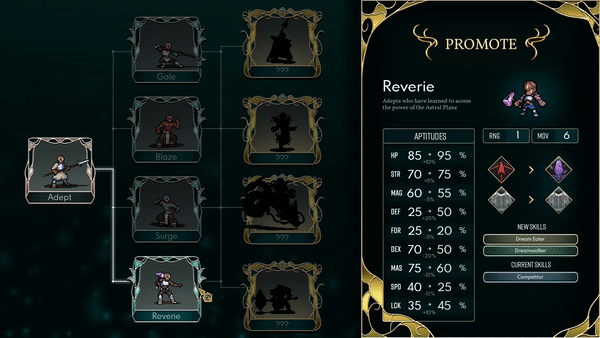
Chapter 10 will give you a ton of Aspects after it ends, but at the very beginning, two characters will join, both of which are holding Aspects. Aurima comes with “Theron’s Passion,” which causes you to gain a permanent 1% to your crit rate every time you activate a critical hit only for the map you are on. Now, this sounds really good on paper and a way to make a unit snowball. But in practice, it’s not really that useful. The biggest reason why is “Malice’s Suffering” exists, which increases Crit by a permanent 30% for a specific trade-off (which will be discussed later).
In order to match up to this aspect, you would need to crit more than 30 times in one map to be on par with Malice’s Suffering. Even the most crit-centered builds I could make in Dark Deity would average out at 10 crits per map if I was lucky and not purposefully feeding them. There’s no way you can make this work as well as Malice’s Suffering without some heavy feeding to one unit, which may be optimal but is beyond boring. Also, considering that Crit Builds are usually one-shot wonders that can’t take many hits back, it would be very hard to feed someone this much without them dying. No matter how you look at things, this Aspect is massively outclassed by the more consistent ones and even by other Crit Aspects.
If you really want to try making it work though, any high-crit build should be fine. Dragoons, Phantoms/Acolytes, and Thunderlords should pair okay with this aspect, but I heavily recommend just using a different one on any of these classes if you’re doing a normal run. This is a D-Tier Aspect and should not be used unless you are determined to make it work and understand the disadvantages of doing so.
The last character unlocked in Chapter 10 is Vesta, who carries with her “Faine’s Judgment”, which causes the main unit which has the Aspect equipped to increase their damage by 5% for every bonded unit within 2 tiles (bonded units refers to characters that have a bond or support with each other back in the base menu). Now, as of this writing, this Aspect does not provide the intended effects it is supposed to, but it may very well be by the time you read this. (It’s also worded very poorly and can be interpreted as each bonded unit within 2 tiles of the one holding this Aspect has their damage increased by 5%, but this is false.)
However, let’s analyze this Aspect as if it worked as intended. Now, a character can have a max of 10 bonds in the game so you could theoretically increase that unit’s damage by up to 50% if you plan things beforehand. However, on most average unplanned runs, you will be nowhere near to achieving this and can expect a 15-20% increase in damage on average. At the time of this writing, this Aspect only works on Player Phase. So, due to most players playing an unplanned normal-ish run, as well as only affecting Player Phase, this Aspect falls into C-Tier. If you are preplanning a run and want to abuse this, however, this can be a solid B-Tier with the higher numbers you would reach. This one will work well on anyone if they have enough bonded units in the rest of the army.
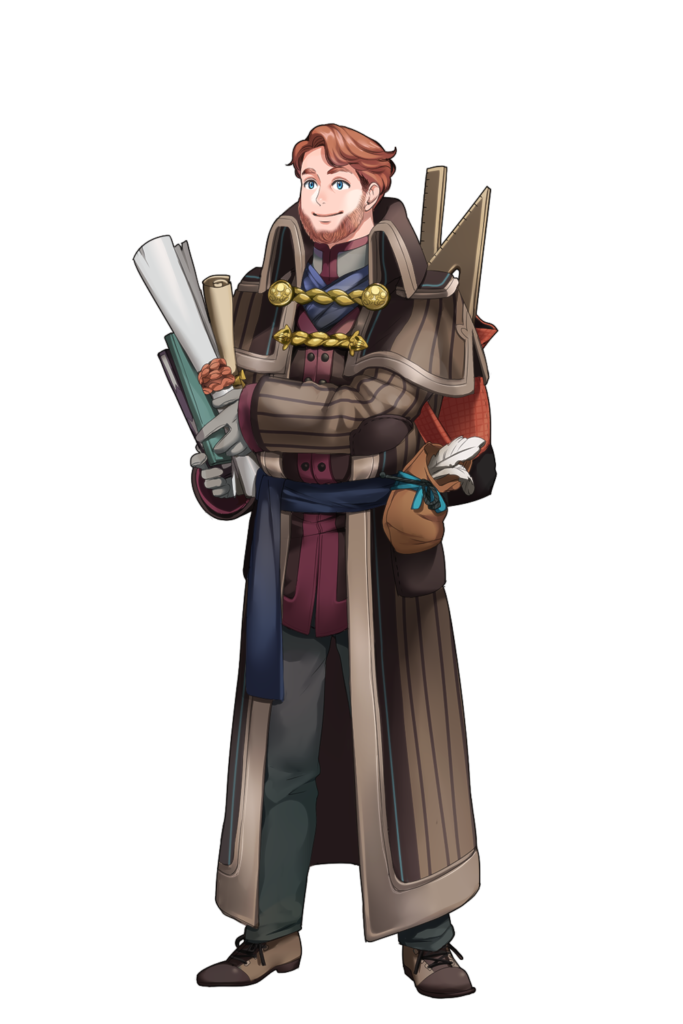
Once Chapter 10 ends, you will be given a ton of Aspects for story-related reasons. I am going to go through them in no particular order beginning with “Yl’mar’s Faith” which grants a 40% resistance to Arcane Magic. (Now, you get this past Chapter 10, so starting on Chapter 11 you can use this Aspect. From Chapter 11 onwards, there are a total of 58 enemies, bosses like Akmenos in Ch 20 and Henry from Ch 23 count as three or more enemies due to their large HP Pools, that can use Arcane Magic, give or take a few enemies.)
You gain more of these “gain 40% resistance to ____ type of magic” after Chapter 15, but it is undeniable that out of all of those Aspects, this one will get the most use out of all of them. I counted how many enemies used the different magic types for the whole game past Chapter 11. (The others you unlock at 16, so only Arcane enemies were counted from Chapters 11 to 14 and not the other types of magic. Chapter 15 is not counted due to the enemy being, well…yourself.)
I will inform you of the rest of the counts once we reach the later Aspects, but for right now, Yl’mar’s Faith gets a very low C-Tier only because at the time of receiving it, you can get more use out of it than the other three aspects that increase a certain type of magic resistance. Yl’mar’s Faith is not as consistent as some of the other Fortitude-boosting aspects since those work on every magic type, but it’s still consistent enough to work on enough enemies to warrant a C-Tier. Units weak to arcane magic will obviously benefit from this the most, such as Defenders/Sentinels, or most units with a Plate Armor type.
Another Aspect unlocked after Chapter 10 is “Kyne’s Passage,” which grants units a 1% boost to their Advanced Stats every turn. Advanced Stats, for those that don’t know, are your accuracy, dodge, crit, power, and true speed stats. Now, this is very powerful if you’re willing to abuse it. In order to start really feeling anything from this Aspect, you need to wait for at least 10 turns. If you really want to snowball, 50 turns will turn any unit into a freaking monster. However, due to most players not wanting to spend 50 turns to make one unit good, I’m putting this down as a low C-Tier.
Also, consider the fact that some maps have turn limits or the mission is to escape or defend something, which makes it hard to camp for 50+ turns to raise those stats. Plus, waiting that many turns will drastically lower the amount of gold you earn at the end of the map, which is very important in Dark Deity. (For those that did not know, the gold you earn at the end of each map is tied to how many turns it took for the player to beat the map. Fewer turns equals more cash.)
Yet another downside is that waiting that long can be, well, boring and the average player may not want to do that. Due to how many negatives come with this Aspect, C-Tier is fitting. This Aspect is most certainly good if you’re willing to put the time in, but it needs to be only on certain maps as others will completely negate the use of this and you would be better off picking something that is more universally applicable. With enough patience and turns, this aspect can and will work on any character in any class…the problem is just waiting long enough to get there.
The third aspect we will cover from the plethora of Aspects you get after Chapter 10 is “Varden’s Arbor,” which increases the power stat (or how much damage you deal) by 15% of each weapon stat of your currently equipped weapon. What this means is that this Aspect will naturally get better as the game progresses and you upgrade more and more weapons.
The best part of this is that it works on both Enemy and Player phase, unlike Faine’s Judgement. And while this is certainly not the most broken Aspect in the game, it is very consistent and offers enough benefits to go into high B-Tier. Any unit using Purple or Orange weapons (Tier 3 and 4 weapons) will have a blast with this Aspect equipped.
The fourth Aspect I will cover is “Linhera’s Whisper,” which swaps a unit’s True Speed and Power. Now, this is a very odd aspect and there are honestly not that many scenarios you can use this for. By far, the most useful thing you can do with this is slap it onto any Champion because Champions use both True Speed and Power to calculate damage (and will never double enemies themselves due to this skill). Swapping these two stats does nothing but typically makes the unit faster while keeping the same damage output (which means they get doubled less).
Other than this, you could maybe make this work on a unit with an insane speed stat and decent strength or magic, but ideally, you would want both Power and True Speed to be high and not just one. Because of how important these two stats are, you would never want one low, so swapping these stats is pointless if both are already high, and if not, there are other means or Aspects that work better than this one in getting those numbers up. I cannot put this any higher than D-Tier due to the viability of other options in the game.

Let’s just jump right in with the fifth Aspect from Chapter 10: “Altum’s Descent.” This increases your dodge stat by 30% of a unit’s strength stat. So any Raiders/Slayers, or any strong Rogue (like Ford who has the highest Str growth out of all the rogues in the game) or any strong unit in general will benefit from this.
I found that the most useful class to put this on is Raiders though. Just a reminder that every point in the “Dodge” stat decreases the rate of you being hit by 4%. This is quite a massive boost to how often a unit will be able to dodge. A unit at 50 strength will gain 15 of the dodge stat from this aspect which increases dodge chance by a massive 60%.
This buff is extremely useful for any dodge tanks in your army that hit like a truck. This Aspect falls into A-Tier purely because it gives a unit extreme dodge chances if put onto the right unit.
The next aspect unlocked in this chapter is “Hecleon’s Pride”, which greatly increases the odds that enemies will target the wielder. Now, due to this aspect again not working as intended at the time of writing, it’s very hard to tell just how much the odds increase. As of now, I am placing this in C-Tier due to its description being “much more likely to target the holder” meaning it probably does not work 100% of the time.
This makes it inconsistent and unreliable. I could be wrong and the rates at which it attracts enemies could be far greater than the description makes it sound, and in that case, it would fall into maybe a low B-Tier. But for now, lack of testing and a vague description brings this down to a C-Tier.
We’ve now reached the final two aspects unlocked by the end of Chapter 10 beginning with “Zeltar’s Flight,” which swaps a unit’s Strenght and Speed stats. Now, this sounds super similar to Linhera’s Whisper from earlier, but it’s in fact slightly more useful than that Aspect. Linhera’s Whisper affects the two most important stats for units, Power and True Speed. And yes, Speed and Strength can affect these two stats, but not for every class. Mages, some adepts, as well as some clerics, do not use Strength at all in these calculations.
This means that using this on a unit with higher strength than speed and is in a magic class will benefit the most from this aspect. Lincoln, as an Acolyte, is a prime example of this. He has high strength that he does not need or use as an acolyte but lower speed. Son using this on him fixes his greatest weakness with no trade-offs. However, the cases in which this aspect is actually good are few and far between. This aspect safely falls into C-Tier as you can make it work on some units very well, but most of the time this is not going to be doing anything and may even hinder your damage output.
Coming last, but most certainly not the least is the final aspect unlocked after Chapter 10, “Kaithir’s Promise”, which increases counterattack damage by 25%. This means that this is an aspect that only applies to the enemy phase. While this may initially sound like a bad thing, this can be rather good on any dodge tanks or regular tanks. Borderline makes Magician Illusionist Alden (or anyone using those classes) broken. I would imagine units like Wren, Helena, Irving, and Cia can use this well due to either their ridiculous dodge chances or decent bulk and ability to take hits. This is a solid B-Tier aspect because it works really, really, well on some units, but is basically pointless on others.
Finally, moving past Chapter 10, the next Aspects you unlock will be in Chapter 12. Three characters will join this chapter but only two have Aspects. Starting with probably one of, if not the best Eternal Aspect in the game, “Vosh’s Sanguination”. This increases all advanced stats by 10% of your max HP. This aspect is so good. You can pop this on any unit or character in any class and they will do better because of it.
As a reminder, Advanced Stats refers to dodge, accuracy, true speed, crit, and power. All 5 of these stats will be boosted by 10% of Max HP. As by endgame, units naturally surpass or are close to 100 HP, this is quite significant. It can be further boosted with Max HP stat boosters. Units that will benefit the most from this are Monroe with his high HP growth, any warrior that has gone into the knight class, or anyone with a high HP pool will dominate with this equipped. This is an easy S-Tier aspect that you can use on anyone and see immediate results.
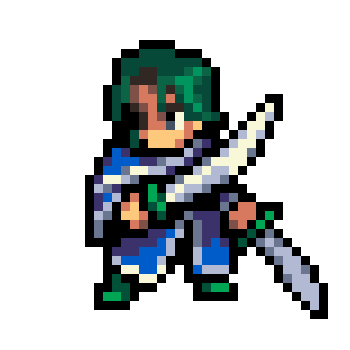
On a lesser note, Ford joins in Chapter 12 with “Shamac’s Tide”, which restores 5 HP for every dodge a unit does. And while, yes, this is good for a dodge tank, dodge tanks should (a) not be taking too much damage, and (b) if they do take damage, you can just use a healer. This aspect is literally useless if you have three or even two clerics on your team, as you can just heal any damage they take.
The best units for this aspect, if you really want to run it though, is Wren, Cia, Brooke, or any other dodge tanks you may have in your army. This aspect however falls into low C-Tier due to it being easily replaceable by any cleric in your army.
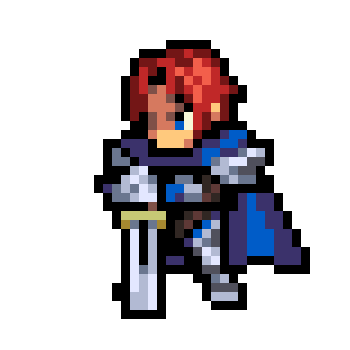
Chapter 13 has three more units joining as well and two of them have aspects just like the last chapter. Both of which are less useful than Vosh’s but still pretty good. Thae’ Lanel will join with the aspect “Vigmar’s Charge,” which causes kills to grant 2% more power during the chapter, and it stacks. Now, I know I rated Theron’s Passion low and both of these aspects sound pretty similar in nature, but this aspect is actually far better at causing units to snowball.
Firstly, 2% is double of 1%, meaning you need to kill half as many enemies. Second, Theron’s Passion relied on crit procs, which are usually luck-based. Pick up an accuracy weapon with this aspect, and you can confirm snowball instead of praying for crits. Lastly, Class skills like the Slayer and Blazes will cause this to snowball further. Aurima as a Blaze will gain 6% more power every kill due to this aspect, the Blaze’s class skill, and Aurima’s personal ability. Slap this on a Slayer or Blaze and you will start to feel your numbers increase with every kill unlike Therons’s Passion which is too slow and has no abilities that can stack with it. This is a C-Tier aspect because it just works fine on most classes and characters, but really good on a select few.
The last unit that joins with an aspect in Chapter 13 is Maeve, and she joins with “Pelagiel’s Flash,” which only affects units that can double enemies. If the unit doubles, the second attack will deal 25% increased damage. This aspect falls into B-Tier as well. It works extremely well on Striders as the extra 25% damage on double hits stacks with the Strider’s ability to do the same thing to increase the damage of the second hit by a whopping 50%. A downside to this aspect is that it needs to be put on a fast unit to have any effect. No double hits mean no bonus, so you can really only put this on fast Rogues, Striders which reduce weapon weight thus making you faster, or any unit with a high speed/true speed.
Are you ready for yet another barrage of Aspect unlocks? I hope you are because after Chapter 15, you unlock around perhaps a third to a quarter of all the aspects in the game. So, this is going to be a long segment. Beginning with a more mediocre one this time, “Manos’ Fury,” which boosts power by a massive 50%…at the cost of permanently setting the unit’s hit rate at 50%. This is just bad. Yes, a 50% power boost will make most units hit like a truck, but there will always be a drunk driver at the wheel. A 50% hit rate is bad, and there is never going to be a time where you have a hit rate higher than this.
I suppose this can be used to maybe cheese out some thieves with an inaccurate unit, but it’s far more consistent and reliable to just build some green weapons on your units. Not only this, but you get an Aspect three chapters later that is just this but less intense and provides zero downsides. This Aspect belongs in D-Tier due to such a heavy downside in most situations. I suppose you can make it work on a unit that is rarely hitting anyways, but by that point you’re better off either build a green weapon or use a different character.

This next section will be a bit odd. I’m going to talk about three aspects all at once as they have very similar effects and we can also re-discuss an aspect I talked about earlier. The three I will be talking about are “Izn’s Hope” (grants a 40% resistance to Holy Type Magic), “Prisbel’s Rumble” (grants a 40% resistance to Storm Type Magic), and “Aethe’s Chill” (grants a 40% resistance to Flame Type Magic). Now, all of these effects are extremely similar to Yl’mar’s Faith (grants a 40% resistance to Arcane Type Magic).
If you count the number of enemies in each magic type from the moment you get each Aspect (Ch. 11 onwards for Arcane Magic and Ch. 16 onwards for the others), you’ll end up with 58 Arcane enemies, 29 Holy enemies, 29 Flame enemies, and 37 Storm enemies, give or take a few. (Note that the Dragon in 16 counts as three flame type enemies due to his large health pool. Same with the Revenant in Ch. 27 for Holy Type. Henry in Ch. 23 counts as 6 enemies because he has 6 clones and Akmenos in Ch. 20. counts as three enemies as well.)
This means that you will have the most usage out of Yl’mar’s Faith than the others by far if you use them for a whole run. There are a bit more Storm enemies than Flame and Holy so you may get more stock from Prisbel’s Rumble than the other two, however, there are always other details to consider, such as your unit’s specific weaknesses and the specific chapter in front of you if you switch these out. And this applies to Yl’mar’s faith as well. In some chapters, some of these aspects will be completely useless.
On others, like Ch. 14 which is filled to the brim with holy enemies, these Aspects will be better. Due to their odd usage in every chapter and a lack of consistency, all three of these aspects fall into D-Tier with Prisbel’s Rumble being slightly more useful than the other two. Yl’mar’s Faith still barely retains its C-Tier grade in a general-purpose run due to its earlier unlock time and just there being way more arcane enemies than the other magic types. You would, however, be better off using a fortitude-boosting aspect like the next one to make a more all-around magic tank.
On a slightly more useful note, the next Aspect I’m covering is “Almadessa’s Glade,” which grants a unit +10 Fortitude when there are no adjacent allies nearby. Now, this is far, far more consistent than the last 3 Aspects purely due to fortitude working on all magic types. However, the inconsistent part comes from the “no adjacent allies” part. Yes, you can get this with proper positioning, but it’s just easier to use other Aspects that boost fortitude in other ways without needing to position a unit to be alone every turn you want that bonus.
Also consider the fact that there are typically more physical type enemies than magic ones, which fortitude does not help against at all, and you have yourself a C-Tier aspect that’s most helpful on any magic tanks you have. Helena, most mages, or maybe magic adepts can do well with this Aspect on.
Covering yet another “meh” aspect, up next is “Ayn’s Premonition” which doubles a unit’s true speed when they are below 30% HP. Now, this is another bad Aspect. First, this has no benefit on units that already double most enemies. Second, if a unit’s true speed is too low, doubling it may still not even allow them to double. Third, it only activates when you are below 30% HP when ideally you want all of your units above that threshold.
Meaning, this will never activate all that often and when it does, it may not help at all. The enemy may still hit and kill you and even if it does grant a double hit, you are so low on HP by that point that killing enemies to leave room for another to attack is generally a bad idea. I guess this can work on units with a decent true speed stat (low would mean doubling does nothing) or a Champion as that just adds more damage due to their class skill. Even with these though, this is an easy D-Tier Aspect that should just not be used.

Now, comes one of my favorite Aspects in the game, “Darmena’s Kiss”, which swaps a unit’s crit and power stats. This may be surprising, but this is actually an S-Tier Aspect. While this Aspect is nowhere as universal as Vosh, it can still break the game on the right build. Put this on any unit in a Dragoon Class and build a blue weapon (Benji and Alexa work the best for this build due to their personal skills, and while Benji joins in a really bad chapter, he will easily demolish with this build if you’re willing to invest in him), and watch as they one-shot every enemy they come up against.
Seriously, if you are not doing at least 100 damage in one hit on most enemies, then you got stat screwed. It works this way because every tile moved as a Dragoon gives 4% more crit, and since crit and power are swapped, that instead converts to damage. And with a whopping 7 move stat, you can easily start racking up the numbers to ridiculous levels. Any Warrior in Dragoon using this build becomes an instant wipe for any enemy regardless of how tanky the enemy is, assuming that the unit lands a hit (not counting the boss units that have large health pools).
For bosses, they can easily wipe 200 or more HP off the boss with a single engagement, especially if they double. The sheer ability to one-shot any basic enemy with a character that has 7 tiles to move (9 if you go Dragon Knight afterward) is not only ridiculous, but it is damn near game-breaking. If you have never tried this build, I heavily recommend you try it at least once. You may find some other uses for this Aspect if you’re creative, but this is by far the best use for it and is what places it into S-Tier.
The next Aspect to cover from the trove of Aspects the player gets after Ch. 15 is “Quintare’s Quill”, which swaps a unit’s luck and mastery. Now, mastery is a slightly confusing stat but to simplify things, it lets a unit deal more damage when they have an advantage against the enemy’s armor type and even slightly helps in bad matchups as well. So it’s a pretty good stat to have. Units like Sophia, Iris, or anyone else that has a high luck stat can make use of this to deal more damage consistently.
However, this can also be used to make high mastery units more into crit machines. Units like Wren, Liberty, Rose, and Fenton all have high mastery growths and decent to low luck. However, there are more useful aspects than Quintare’s Quill overall. This is a respectable C-Tier aspect that can be used to a good degree on the right characters.
Tanks will appreciate this next Aspect, which is “Jahno’s Stupor.” It decreases a unit’s dodge by 60%, but gives 10 defense and 10 fortitude. This is a great Aspect to put on any tanks that do not rely on dodging. Classes like Astral Seeker, Defender/Sentinel, Battlemages, and Inquisitors will all benefit from this greatly as dodging does not matter to these classes at all. While this aspect is good at giving units bulk and survivability, that is about all it’s good for. Due to a lack of offensive power, and combined with the fact that this actually hinders dodge tanks like Wren, Brooke, Cia, or anyone else that happens to dodge a lot, and this Aspect places in B-Tier.
This next Aspect seems a little useless at first because, in an ideal world, you would want both of these stats to be high. “Koeli’s Spirit” swaps its user’s fortitude and defense stats. There are only a few situational uses for this. If there are a lot of physical enemies on the field, you can use it on a mage to make them tankier, and the same applies to a Warrior on a map of mostly magic enemies, which you can then unequip to go back to normal. But as I said before, it’s ideal to have both numbers be high on a tank of choice.
And that would nullify the use of this Aspect. The best way to use this is on Defender Sentinel Helena. Her Fortitude growth jumps way up to 85% and her defense up to 70%. This actually means that her fortitude will naturally end up higher in this class line and both numbers will be extremely high. However, Defender comes with a skill that boosts your advanced stats by 15% of your unit’s defense stat, which is really good when all of a sudden your defense growth spikes to 85% resulting in your defense easily hitting the 50s. This is the best way to use this Aspect, and even then you could probably find a better Aspect to use on most characters. This is easily a C-Tier Aspect.
Following the C-Tier trend is “Yl’undrea’s Drift,” which drains a unit’s magic and puts it into their fortitude and defense. Now, not too many units benefit from this. If a unit uses magic at all, this Aspect will ensure they deal 0 damage during every fight. This leaves your physical units which have little to no magic and translates to this Aspect doing diddly-squat. But that is not true for all classes. Warriors gain access to Dragon Knight which sets their magic equal to their strength plus 5, but their balance and power weapons swap to fire magic. So while yes, putting this on a Dragon Knight will increase their bulk and tankiness, they’ll lose out on two of their weapons dealing damage.
The only other classes that pop in mind are Adepts in the Reverie/Astral Seeker line or Gale/Windrunner line. Astral Seeker carries the same problem Dragon Knight does but with Arcane Magic. Gales and Windrunners, however, have no downside when using this Aspect as they do not have access to magic spells or abilities and have good magic growth still. The best part is they usually lack bulk, so this is a great way to ensure they can stay on the frontlines while their procs and insane offensive stats stay in play. This has a massive benefit on only a small number of units, so this earns a C-Tier. You can still use this Aspect with great success, but not many characters will benefit from it and it may, in fact, hinder a magic user’s performance.
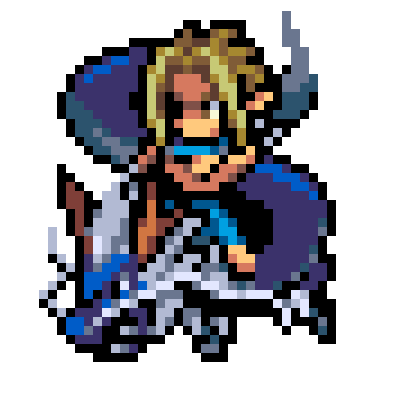
Jumping up a tier, we have “Ancara’s Glow.” This depletes a unit’s luck and dumps it evenly into a unit’s dodge, true speed, and accuracy. Again, this is super situational, but unlike a few of the other Aspects, it will not harm anyone. Units with high luck usually end up being crit machines (examples being Sophia, Benji, and Brooke who all have high personal luck stats) and this can turn them into killing machines.
Buffing true speed is a boost to both offense as you double more, and defense, as you get doubled less. This aspect will not do anything on low luck units and may as well be avoided at that point. Due to a unit’s needing a high level of luck, this Aspect falls into B-Tier. It can make a few units ridiculously strong, but that’s about it.
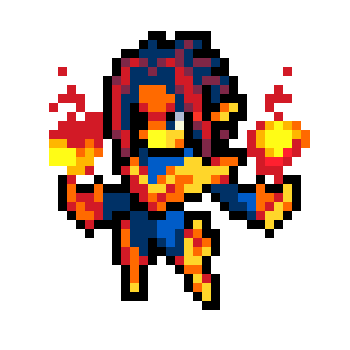
Back onto the tier we were at last time, we have “Innileth’s Scale,” which swaps a unit’s strength and defense. Now, all physical classes ideally want a high number on both of these. And honestly, even with low defense and high strength, all you’re doing is trading damage for bulk or vice versa and you could use a different Aspect to fix up those weaknesses. Instead, this will be most useful in some adept magic classes.
Adepts tend to have decent to high strength and magic regardless of what class they pick. Both Blaze and Surge use magic and have no use for strength, and both are rather frail. This may help them gain a bit of bulk for no cost at all. This is the only real scenario for this Aspect, and even then, both Blaze and Surge can use other Aspects to drastically boost their offense. This falls into C-Tier.
Onto one of the worst aspects in the game, “Sarathel’s Sight,” which causes a unit’s attacks to mark an enemy, and causes them to take 10% more damage. Now, most enemies in this game are going to die in one or two attacks from your units anyways. This will never really be that useful in combat aside from bosses. And even then, Sara has the exact same skill as her personal skill which renders using this meaningless unless it stacks. The fact that this Aspect can be replaced by Sara and has no real use except on bosses puts this at D-Tier. Still better than Flux as it has no downsides, but you would be better off using literally anything else on most characters.
Sticking on the same tier this time, we have “Soleric’s Rally.” Attacking and defeating an enemy restores 10% HP to nearby party members. Now, even if I assume this has a range of 3 tiles, first, 10% HP is nothing. Second, just use a cleric. Why would you ever use this instead of a healer in a normal vanilla run? Guardians can also spread out their heals over an area, so this aspect is practically worthless. Third, you have to be attacking, not defending. Meaning, it has to be on your turn or on the Player Phase. All of these restrictions, plus the option to just replace it with any cleric in the game, puts this aspect easily into D-Tier. Albeit, more useful than Flux because it has no downsides.
Sticking with D-Tier, the next Aspect we will cover is “Kitara’s Chord,” which swaps a unit’s accuracy and dodge stats. Now ideally, you want both stats high, and if they are, swapping is literally useless. However, if one is low and the other is high, you can make a trade. But this is essentially just swapping defense for offense or vice versa, which is not ideal. There are many other Aspects that can boost either of these stats. Thus, this aspect falls into D-Tier. You can still find some use with it if you are creative, but it is overall a bad aspect.
On a slightly more useful note, “Samaran’s Shade” makes enemies less likely to target the unit holding this Aspect. Upon testing this at the time of this writing, this Aspect does not seem to work. Or at least, If it did, it didn’t do much. Due to there being no reliable way of collecting data on how much this aspect works, this is falling into C-Tier just like Hecleon’s Pride. It’s worth noting that Rose has this Aspect permanently with her personal skill, and these may or may not stack. It is unclear how much either of these skills works. Of course, this would be most beneficial on Rose assuming the skills stack, or any other frail unit that cannot take a lot of hits.
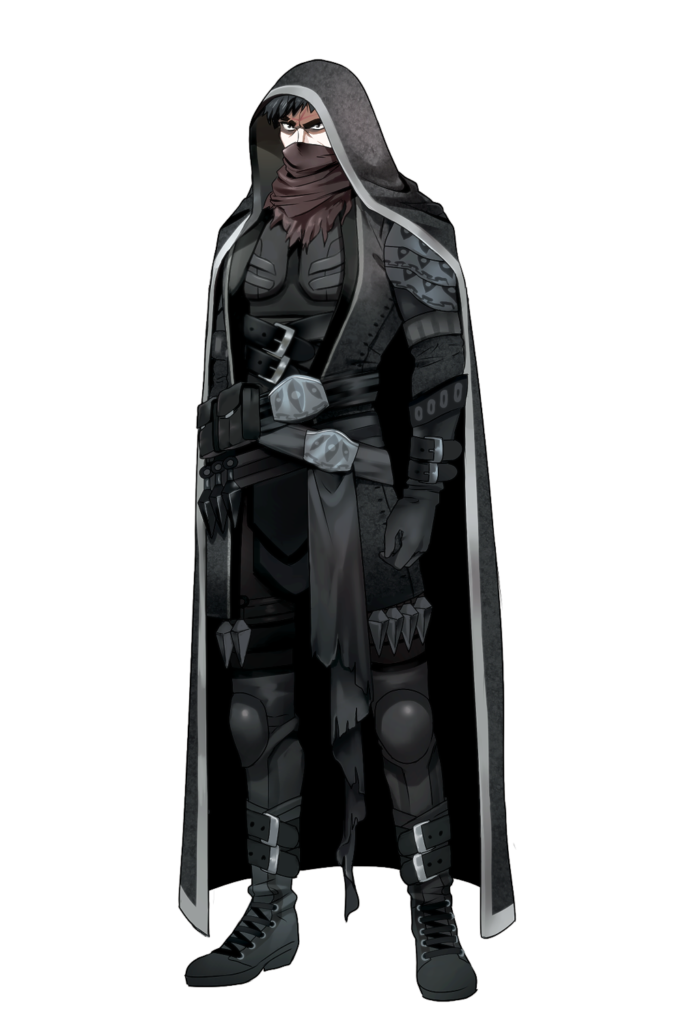
The second to the last Aspect you unlock in Chapter 15 is “Njallum’s Heritage”, which increases a unit’s Mastery by 20%. This has no downsides and is in fact good on everyone. Mastery affects how much damage you deal when your weapon type is effective against the enemy’s armor.
Units with already high mastery will gain the most from this as the 20% bonus means that a higher base stat will mean a bigger stat gain. So units like Irving, Fenton, Maeve, Rose, Liberty, Monroe, Wren, Brooke, and any other units with a high mastery stat will excel even more with this. Mastery is a decently important stat, so this falls into A-Tier. It’s universally good on all characters and has no downsides.
The final Aspect we’ll cover from Chapter 15 is “Malice’s Suffering,” which increases crit rate by 30% at the cost of halving your defense and fortitude. Now, this sounds bad initially until you remember that the crit monsters like anyone in Acolyte, Sophia, Iris, and Brooke, all do not really need either of those stats. They are primarily meant to nuke an enemy and then stay back as the tanks move past them to defend them. Iris and Sophia were not taking many hits anyway, so what good does keeping half their defense do?
It’s a worthwhile trade for some units as a permanent 30% crit rate boost can be what you need to go from 60% crit rate to 90%. That is almost as many critical hits as you land attacks, which is insane. However, not every unit finds this trade worthwhile. Anyone that already does not have a high crit rate may as well not use this, as a base 30% crit rate is not worth losing half your defense unless your crit rate is already high. Due to some units not finding this beneficial, this aspect falls into a solid B-Tier.
The actual final Aspect you unlock in the game also happens to come from the final character you unlock in the game. Liberty joins with “Yl’andra’s Font,” which boosts a unit’s Power stat by 20%. Now, it is important to note the distinction between damage and power. A unit’s damage is calculated by using their power stat (weapon might plus a unit’s strength or magic depending on weapon type) minus the enemy’s defense or fortitude.
That means the 20% extra Power is added on before subtracting the enemy defenses which actually gives your unit a higher boost in damage than if it just straight-up boosted damage. This Aspect is so universally appreciated and has so many benefits, it belongs in S-Tier with Vosh and Darmena. While not game-breaking, this aspect is in the top 3 Aspects in the game, and putting it on any unit will make them even better at their job.
While we did analyze and rank each of the Aspects here, it’s up to the player to make use of them. Aspects will vary in usefulness depending on the character, class, level, map, and even RNG factors such as level ups or effects of the Aspects themselves. With the sheer amount of variety and customizability in this game, and the game not being that old at the time of writing this, it’s very possible that there’s something we overlooked or a combination that just hasn’t been tried yet. At the end of the day, this is a game that lets the player express themselves through their play, so get out there and experiment and find what works for you. It’s up to you to use the information we gave you in a way that’s fun for you.
Read Next:
The Great Ace Attorney Chronicles: Spoiler Free Review for PC
Credits
| Program | Founding Writers |
| Author | Armani Sanchez-Yu |
| Publisher | MGN |
| Game | Dark Deity |